Drought Putting Pressure on Produce Prices
BY JAXEN WERNE
“Corn and zucchini have been okay but most other produce has gone up in price,” said José Escobar, The Good Life Grocery’s produce buyer. “I’ve noticed prices have gone up about 20 to 30 percent on certain items.”
The last three years have been the driest recorded in California history. A Nature Climate Change study found that the past 22 years were the most parched the area has seen in more than a millennium. Water levels in all the state’s major reservoirs are well below historical averages, with the two largest, Lake Orville and Shasta, at critically low points.
The drought has hit farmers extra hard. Agriculture uses upwards of 80 percent of the water consumed in the state to irrigate fields, provide for thirsty animals, and engage in other activities.
“I’ve been in this business for about 40 years, and in the last six- or sevenyears things have gotten a little worse,” said Escobar. “A lot of small farms have been getting cut out of Bakersfield and San Joaquin Valley. Older folks will pass their farms onto their kids but then they’ll just sell them because of problems with labor and water. Avocados, oranges, and lemons all come out
of this area. We’re not seeing as many cherries as before either. We have a small farm that supplies us with raspberries, blackberries, and strawberries and she’s been having some problems with labor and water too. With the drought we see these farmers come in only two or three times a week, whereas before it was daily. The same produce is always available but sometimes it comes up a little short, so not all customers may be able to get it and it’s a little more expensive.”
“The drought is taking a lot of farmers out of business,” echoed Rusty, with ‘What a Tomato,’ located at the SF Market. “Older folks are retiring and the younger generation don’t want to take on the family farms. There’s no more water in the rivers and they’re just sucking up groundwater. Lake Mead, Powell, Shasta; they just keep looking worse and worse. Our infrastructure is from the ‘20s and ‘30s when there were thousands of people here, now there are millions and we just can’t keep up.”
Last year the federal government limited water access to just five percent




San Francisco Wants to Make Cooking with Gas a Thing of the Past
BY MATT NAMY
The City and County of San Francisco is part of a growing number of local governments that’ve adopted policies to restrict the use of natural gas. As of last year, all new buildings in the City have to be fully electric, with use of gas effectively banned. Sixty local governments in California have approved similar laws.
The policy reflects an effort to curb greenhouse gas emissions, improve public health, and reduce the risk of gas-fueled conflagrations. According to Charles Sheehan, San Francisco Department of the Environment (SFDoE) chief policy and public affairs officer, while “everyone knows we need to get off of fossil fuels, just as important are health and safety issues.”
Gas appliances are found in more than 90 percent of California homes. Although so far building electrification policies have focused on new construction, if the effort expands to existing uses residents and businesses will no
doubt notice.
Natural gas is primarily composed of methane. While less polluting than coal or oil, its environmental impacts are notable. According to SFDoE, gas use in residential and commercial buildings accounts for more than one-third of San Francisco’s carbon footprint. As much as four percent of methane associated with gas is leaked into the atmosphere as it travels through distribution pipelines. Methane is a potent greenhouse gas, with 80 times the heat-trapping capacity of carbon dioxide.
As the effects of climate change become more acute, environmental advocates see electrification as an essential approach to reducing human’s influence on the weather. Electricity consumed in San Francisco is largely generated renewably, from wind, solar, and hydroelectric, which don’t emit greenhouse gases. These sources now constitute nearly 70 percent of electricity supply, with a City goal to reach 100 percent by
of what it contracts to California’s agricultural districts; this year farmers are receiving nothing from federal resources. The state is limiting its allocation as well, fulfilling only 15 percent of its agricultural contracts. There are also restrictions on taking water directly from rivers and streams, and the state has begun curbing groundwater usage for the first time.

“A lot of farmers don’t know what’s coming, they don’t know how the water will be allotted,” said Tom, with Washington Vegetable, also located at the SF Market. “There’s just not quite enough to go around. We should have been building more reservoirs twenty years ago. When was the last time you heard of an infrastructure project? A lot of my friends out there with wells are losing water pressure and just keep having to dig deeper.”
Farmers rely on groundwater during periods when surface supplies are scarce. According to the California Natural Resources Agency, more than 4,000 wells have dried up since 2014. Many of the state’s aquifers are over drafted. Smaller farms tend to have larger challenges, with fewer irrigation sources; less acres with direct water access, and shallower wells that dry up sooner. The state will likely have to cope with water scarcity for the quite some time. Amongst other grim forecasts, California’s Fourth Climate Change Assessment predicts that agriculture could experience growing water shortages over the next three decades, a problem compounded by loss of soil moisture from high temperatures. The state’s snowpack, which accounts for 30 percent of California’s water supply, is expected to decline by two-thirds by the end of the century.
Mission Bay Building Owners Sue as Pipes Break Due to Subsidence
BY JULIE ZIGORIS
The Radiance, a 99-unit condominium building with entrances at 330 Mission Bay Boulevard and 325 China Basin Street, is suing the City for damages caused by subsidence, or sinking. The Radiance Owners Association (ROA) represents the interests of individual condominium owners and oversees common areas, such as sidewalks.
Subsidence has been causing problems for years in Mission Bay, most notably along Third Street, where sidewalks have visibly separated from buildings. The issues identified in ROA’s suit, which seeks class-action relief on behalf of all Mission Bay residents, goes beyond sidewalks to the invisible infrastructure underneath buildings.
According to Daniel Rottingaus, a lawyer representing the Association, the Bay mud underneath the building is slipping away and pulling with it pipes that go down before turning to run lateral to the street and connect with the sewer.
“As a result of them breaking away,”
Rottinghaus said, “you basically have this sludge that is leaking out beneath the building and attracting flies.”


A soils report for the area surrounding the Radiance indicates that as much as 24 inches of settlement could occur over the next 50 years, at the rate of half an inch annually. The subsidence that’s occurred has already greatly exceeded that rate, sinking as much as 18 inches in some areas.

While subsidence is a natural process that occurs throughout the world, studies indicate that it historically occurs at a faster pace in coastal regions like the Bay Area.
Municipal officials maintain that it’s up to property owners to fix sidewalks, issuing violations to repair damages as recently as June 30, though homeowners don’t have the right to make significant changes to the paths and streets that front their properties.
Rottinghaus acknowledges that California law requires property owners
INSIDE
View:
Pg. 2 Short
Pg. 2
Pg. 3
Pg. 4 Community Calendar Pg. 6 Long
of Yesteryear Pg. 7
FREE Serving the Potrero Hill, Dogpatch, Mission Bay and SOMA Neighborhoods Since 1970 AUGUST 2022
Publisher’s
Wildlands
Cuts
Mission Bay Elementary School
SOMA Animal Hospial Welcomes Pet Patients
Bridge Superhighway
GAS continues on page 8 SUBSIDENCE continues on page 8
PUBLISHER’S VIEW

WILDLANDS
California is blessed with an abundance of open spaces, protected in different fashion by a quilt of public and private entities. The federal government controls roughly half of all Golden State lands, under the jurisdiction of the U.S Forest, National Park, and Fish and Wildlife services, among other agencies. About three percent is owned by the state, with a steady expansion of areas protected by nonprofit organizations.
Among these is The Wildlands Conservancy. Founded almost 30 years ago, the Conservancy maintains California’s largest private nature preserve system, using those lands to provide educational programs to more kids than any other nonprofit in the state. It recently acquired the 26,600-acre Lone Pine Ranch from Dean Witter’s descendants, expanding its stewardship to four preserves along a 106-mile stretch of the Eel River.
Land ownership, particularly of places intended to be conserved and serve the public and nature, is an awe -

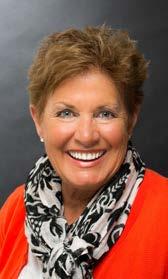

some responsibility, as in “extremely impressive or daunting; inspiring great admiration, apprehension, or fear.” Thoughtful stewardship of forests, meadows, and water bodies – ecosystems – prompts the need to grapple with multiple challenging and complex questions, ranging from the practical to the metaphysical. What does “natural” or “wilderness” mean in a world in which humankind’s smudgy fingerprints are everywhere? How is “restoration” determined for lands that’re subject to millennial climate cycles, as influenced by people’s behavior, and which’ve been repopulated with species that immigrated from far away onboard ships and shoes? How does one pay for any of this?
The Eel River has been particularly besieged by humans, subject to dams and hydroelectric facilities, large portions of its flows siphoned off for irrigated agriculture, cannabis cultivation and drinking water. How best to heal the
PUBLISHER’S VIEW continues on page 10
SHORT CUTS
Venture capitalist David Hornik and philanthropist Pamela Hornik donated $1 million to the new Institute of Contemporary Art San Francisco last month. The gift places the couple in the top tier of founding donors to the institution, along with Minnesota Street Project Foundation founders Andy Rappaport and Deborah Rappaport, and Instagram co-founder Mike Krieger and Kaitlyn Krieger. The non-collecting museum was launched in Dogpatch last year. “The money is being used for all the things it takes to start a museum,” said Alison Gass, ICA San Francisco director. “When you’re starting an institution, you don’t always know where all the costs will be, especially with construction and ambitious opening exhibition schedules. David and Pamela have been incredible founding members who have already committed to underwriting curator Christine Koppes’ position for three years; now this unrestricted gift is coming when we need it the most.”
Mental Health in the Hood
University of California, San Francisco (UCSF) health practitioners are seeing patients at the Nancy Friend Pritzker Psychiatry Building, located at 675 18th Street. The five-story,150,000square-foot structure, close by UCSF’s Mission Bay campus, features a lightfilled atrium and interior transparency. “We wanted to design a building that defied outdated psychiatric institutional
models that separated mental from physical health and perpetuated a culture of shame,” said Matthew W. State, MD, PhD, chair and Oberndorf Family Distinguished Professor of Psychiatry and Behavioral Sciences at UCSF. “We created a place with welcoming entrances and engaging gathering spaces that will draw in patients and families. It will give them access to light and nature, integrate physical and mental health services, and allow them to focus on healing in a low-stress environment.”
The facility is one the nation’s few that combines outpatient mental health care with programs in psychiatry and psychology training. It includes a center for pediatric, adolescent and family health care, and will host collaborative research across psychiatry, psychology, neurology, neurosurgery, radiology, pediatrics, anesthesiology and obstetrics/ gynecology.
Art Stays
$68 Subscription $132 Subscription-Benefactor Other contribution amount $ Please send my one-year subscription to: FULL NAME EMAIL ADDRESS STREET ADDRESS CITY STATE ZIP CODE Enclosed is my check. Please send, along with this form, to: The Potrero View, 1459 18th St., #214, S.F., CA 94107 I am sending my payment via PayPal to office@potreroview.net. I love the View and would be delighted to support it by being a subscriber. YES! www.potreroview.net/product/subscribe or complete the form below At 12 pages the View is too brief. With recent increases in advertisers, subscribers, and donors, we’re just $10,000 short of reaching 16 pages for an entire year. That’s equal to a handful of new advertisers, 50 generous readers donating $250 each, or 200 additional subscribers. Your contributions will make news! Four pages! Susan Olk Top Producer, CRS, CLHMS LIC# 00788097 | 415.279.8835 Susan.Olk@CorcoranGL.com www.susanolk.com ©2021 Corcoran Global Living. All rights reserved. Each franchise is independently owned and operated. Corcoran Global Living fully supports the principles of the Fair Housing Act and the Equal Opportunity Act. This is not intended as a solitication if you're working with another broker. Information is deemed reliable, but is not guaranteed. Susan Olk TOP PRODUCER INDIVIDUALS TOP 25% OF INDIVIDUALS IN 2021 "Many thanks to all my clients over the last 40+ years that have trusted me with the buying/selling of their home in SF. I am so grateful for all their support that has provided me with an amazing career opportunity." HONOR SOCIETY
SHORT CUTS continues on page 10

2 THE POTRERO VIEW August 2022
PUBLISHER Steven J. Moss ACCOUNTING MANAGER Catie Magee MARKETING MANAGER Richard Romero PRODUCTION MANAGER Helena Chiu THIS MONTH’S CONTRIBUTORS Copyright 2022 by The Potrero View. All rights reserved. Any reproduction without written permission from the publishers is prohibited. Joe Castrovinci, Kit Fraser, Steven J. Moss, Matt Namy, Vivien Wang, Jaxen Werne, Julie Zigoris, Jessica Zimmer THE VIEW IS PRINTED ON RECYCLED NEWSPRINT WITH SOY-BASED INK.
BY STEVEN J. MOSS Editorial and policy decisions are made by the staff. Published monthly. Address all correspondence to: THE POTRERO VIEW, 1459 18th Street, Number 214, San Francisco, CA 94107 • 415.643.9578 E-mail: editor@potreroview.net • production@potreroview.net (for advertising)
Art Gift
A mural that depicts enslaved Black people and Native Americans will remain on display after a four to three vote by the San Francisco Board of Education to rescind a previous effort to remove it from view. The school board’s 2019 choice to eliminate the 1,600-square-foot painting, “Life of Washington,” had faced an uphill battle in the courts. In the 1930s, Russian immigrant and Potrero Hill resident, Victor Arnautoff, began painting frescoes inside George Washington High School
Mission Bay Elementary School on Track for 2025 Opening
BY JESSICA ZIMMER
Earlier this summer the San Francisco Board of Education (SFBoE) unanimously approved construction of a prekindergarten through fifth grade school and Linked Learning Hub to be located on Mission Bay South Block 14. The Hub will serve as a professional learning center for teachers and staff, as well as a place to connect high school students with career and workforce readiness experiences. The Mission Bay Elementary School is planned to open in August 2025.
SFBoE endorsed a $95 million contract with McCarthy Building Company/DLR Architects for design, permitting, and construction of the school campus.
“We are still fundraising for the full buildout of the specific area on the campus that will be a program space for high school students,” said Laura Dudnick, San Francisco Unified School District public relations manager.
Construction is expected to begin at the end of next year, funded through 2016 Proposition A, which authorized up to $745 million in general obligation bonds to be issued, and was approved by almost 80 percent of voters. In addition, Alexandria Real Estate Equities, Inc. gifted $2 million to the school in 2021.
Several steps need to be taken before construction can begin. A quarter-acre discrepancy between the site and the
plot indicated in the Mission Bay South Redevelopment Plan must be addressed.
“The transfer requires a legal description and property depiction that are part of the Subdivision Map Act process,” said Dudnick. “The parcels are currently being mapped by the San Francisco Department of Public Works Bureau of Subdivision and Mapping. Once those maps are approved by the Board of Supervisors, the property can formally transfer. DPW estimates the end of July 2022 for the Board of Supervisors to act on the map. If that happens on their timeline, then SFUSD anticipates August 2022 for the Board of Education to act on the land transfer.”
The school needs final site approval from the California Department of Education, anticipated next month.
“The project also needs to comply with all regulatory requirements, including the control of the California Department of Toxic Substances Control processes and environmental mitigation measures. Also, the plans will need to be approved by the Division of the State Architect prior to construction commencement. DSA is essentially the ‘Building Department’ for school projects,” said Dudnick.
Despite the remaining hurdles, the University of California, San Francisco (UCSF) considers the project largely approved.
“Negotiation is materially complete. We’re waiting for the final subdivision
Letters to the Editor
Dear Friends and Neighbors,
I’m writing to let you know that I’ve moved to Vermont to be with family. Thank you for your many kindnesses over the near 50 years I lived on Potrero Hill. This wonderful community has supported me in many ways throughout my life as a businesswoman with a flower shop on 18thStreet, a single mother, a graduate student, and a San Francisco Unified School District teacher. The Connecticut Friendship Garden, which I’d been a member for more than 35 years, nourished me. When I first arrived in 1972, I was charmed by the people, the climate and spirit of community.
I hope the neighborhood will continue its innate spirit of welcoming generosity and kindness that helped me thrive.
Mary Price Former Missouri Street Resident
survey from the City. Next, the University of California Office of the President will make the final approval for UCSF.” said Bruce Lanyon, UCSF assistant vice chancellor of real estate services.
According to Lanyon, negotiation took almost two years because three public entities, SFUSD, the City and County of San Francisco, and UCSF had to work through numerous details.
“It’s great that the Mission Bay School and Linked Learning Hub are on target to be open in fall 2025. The need for a PK-5 elementary school and the Hub has only grown since development has almost been completed in Mission Bay,” said J.R. Eppler, president of the Potrero Boosters, a neighborhood association that represents Dogpatch, Potrero Hill, and Showplace Square residents.
SFUSD lost close to 1,000 students, or 2.5 percent of enrollment, in academic year 2020-2021. Another 2,500 students, or almost five percent of enrollment, left the district in 2021-2022.

“The long-term concern is the growth of the City. New residential development is occurring primarily in
HANDY NUMBERS
the southeastern neighborhoods. The demand in this part of town has been high over the past two years. It will remain high as development continues,” said Eppler.
Opening of Mission Bay Elementary School will coincide with a change to the elementary school student assignment process. In fall 2025, the District will shift from allowing families to apply to any elementary school in San Francisco to letting families choose schools within zones close to their residence. According to SFUSD, the new policy will diversify elementary schools, offer families more predictability about where their children will be enrolled, and create strong community connections to neighborhood schools.
“The Dogpatch, Potrero Hill, and Mission Bay neighborhoods have a lot of new construction with excellent housing options for families, with modern amenities like accessible parking and in-unit laundry,” said Jessica Holmes, a Connecticut Street resident and PRE -
MISSION BAY SCHOOL continues on page 9

District 10 Supervisor, 415.554.767 Shamann Walton shamann.walton@sfgov.org
Recology 415.330.1300

San Francisco Animal Care and Control 415.554.6364
San Francisco Fire Department (non-emergency) 415.558.3200
San Francisco Police Department 671-2300; (tip line), 415.822.8147 Bayview Station (non-emergency) SFPDBayviewStation@sfgov.org
SFHOT/Homeless Outreach Team 311 or 415.734.4233
State Senator Scott Weiner 415.557.1300
3 August 2022 THE POTRERO VIEW
SOMA Animal Hospital Welcomes Pet Patients
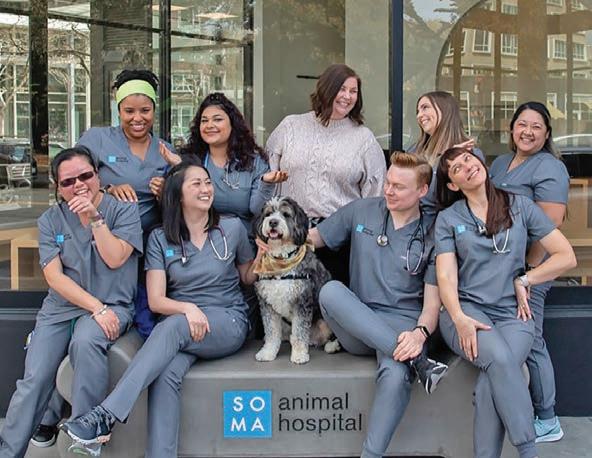
Jayson Johnston was an associate veterinarian for five years at All Pets Hospital prior to launching SOMA Animal Hospital. He started his career as an intern at San Francisco Veterinary Specialists.
doctors and hopes to ultimately ramp up to six veterinarians.
Johnston marketed his services by distributing flyers and homemade ice cream for dogs at parks. An open house in February generated additional buzz, with appointments quickly made. Today, most pet patients are Mission Bay, South-of-Market, Potrero, and Dogpatch residents.
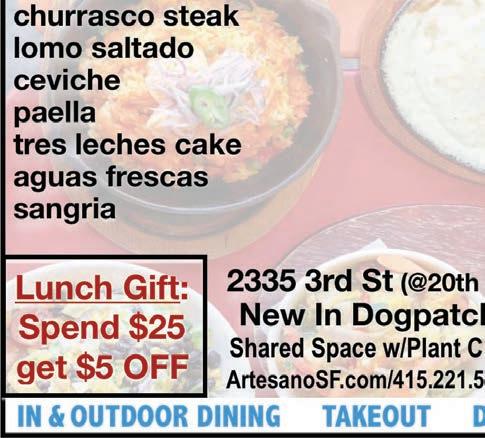

team members—is important. I want this to be a happy place to be for team members, pets, and clients.”

 BY VIVIEN WANG
BY VIVIEN WANG
Earlier this year SOMA Animal Hospital opened at the corner of Fourth and Channel streets in a space originally scoped to be a restaurant. The primary care facility is bright and airy, with five exam rooms, an operating theater, surgery suite, imaging room, treatment areas and pharmacy. It houses different wards for dogs, cats, and exotics: birds, reptiles, fish, rabbits, guinea pigs, chinchillas, and rats.
The hospital filled a geographic gap for pet parents in San Frncisco’s central east neighborhoods, who previously had to transport their pets to infirmaries in the Castro or Mission. New animal hospitals are rare in the City. Castro Animal Hospital opened in 2019; before then it’d been almost two decades since the last animal infirmary in San Francisco opened.

Medical director and co-owner
San Francisco-based Curo Pet Care—a veterinary services company—is the enterprise’s other co-owner. As a family-owned firm, it invests its own funds—rather than taking outside capital—to partner with vets, with a goal of preserving the best small animal hospitals. Johnston was drawn to Curo’s business model because it bucks an industry trend.
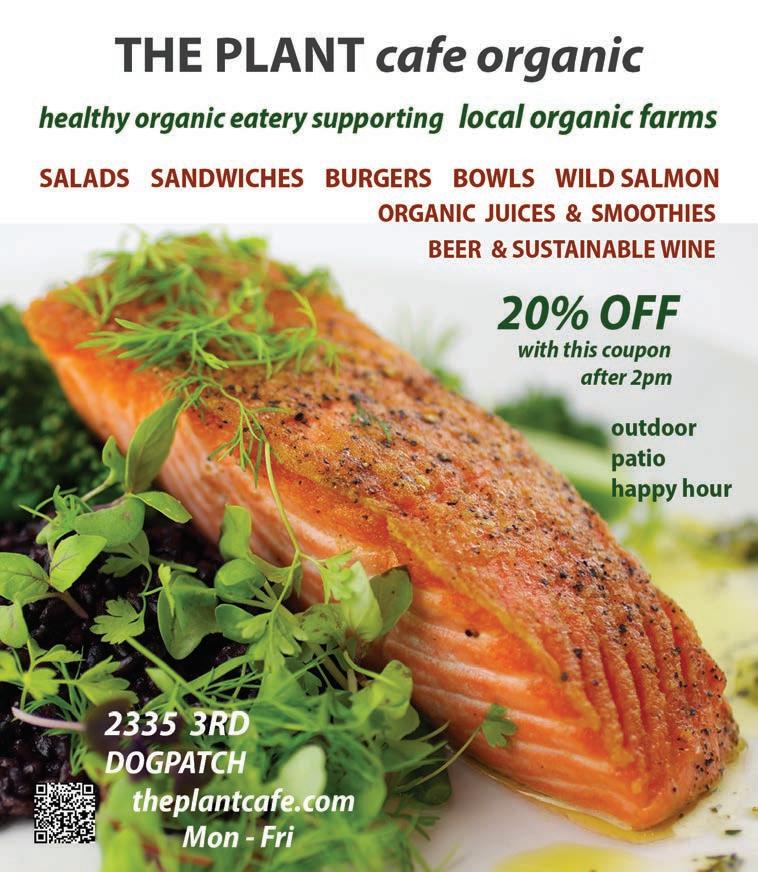

“Veterinary medicine is moving towards corporate medicine,” said Johnston. “The current generation of practice owners aren’t selling to other vets, but to corporate entities that pay more. For new vets, it’s hard to open a business from scratch, especially if you’re strapped with debt.”
SOMA Animal Hospital offers physicals, vaccines, routine bloodwork, dental care, nail trims, spay and neuter, as well as common surgeries, such as bladder surgery and amputation. Johnston’s team includes fellow veterinarian Dr. Barbara Wood, technicians, assistants and client service representatives. He’s seeking two additional fulltime pet
“I love this neighborhood because it’s so walkable and vibrant, and also family- and pet- focused,” said Johnston, a Dogpatch resident who bikes five minutes to get to the office. “It’s been truly rewarding to feel like the neighborhood veterinarian. Everyone can see you, and you can serve as the local resource because you have the pulse of what’s happening in the neighborhood. Mental health—particularly for my
SOMA Animal Hospital is working towards fear-free certification this summer. Created by Dr. Marty Becker – “America’s Veterinarian” – the training aims to prevent and alleviate pet anxiety and stress through calming techniques that create a better experience for pets, pet parents and the care team. If completed, it’d be the first San Francisco animal hospital to secure certification. As an initial step, pheromone diffusers are in place to help soothe anxious cats and dogs.
4 THE POTRERO VIEW August 2022
PHOTO: Chloe Jackman Studios
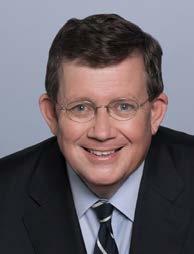

5 August 2022 THE POTRERO VIEW Tim Johnson 415.710.9000 tim@timjohnsonSF.com www.timjohnsonSF.com DRE 01476421 Despite rising interest rates, buyers for Potrero Hill homes continue to be active. Many single-family homes are selling at strong prices with multiple offers. If you have been thinking of selling your home, now may be an excellent time to take advantage of demand from buyers. Sales Prices for All Potrero Hill Homes Sold in 2022* Th e average sales price for a home on Potrero Hillthis year has been $2,388 ,800. If you’d like a free report on the value of your home, call Tim Johnson at 415-710-9000. *Sales information as of of July 18, 2022 1817 19th Street............................$3,250,000 2005 19th Street...........................$2,850,000 1912 23rd Street............................$1,527,000 1920 23rd Street............................$1,613,000 420 Arkansas Street..................$2,400,000 815 Carolina Street......................$1,580,000 958 Carolina Street.....................$3,205,000 508 Connecticut Street..............$2,700,000 1052 De Haro Street....................$1,900,000 1391 De Haro Street.....................$1,300,000 567 Kansas Street.......................$2,200,000 835 Kansas Street.......................$3,400,000 964 Kansas
76 Littlefield
...................$1,230,000 146
794 Rhode
1151 Rhode
1429 Rhode
719 San
418 Texas
706-708
731 Wisconsin
765 Wisconsin
901 Wisconsin
1121 Wisconsin Street...................$1,265,000 What’s Happening with Real Estate on Potrero Hill?
Street.......................$1,500,000
Terrace
Missouri Street......................$1,300,000
Island Street.............$5,625,000
Island Street.............$1,340,000
Island Street..........$2,300,000
Bruno Avenue.................$1,550,000
Street..........................$2,800,000
Wisconsin Street..........$3,710,000
Street...................$2,350,000
Street..................$1,900,000
Street..................$4,925,000
Online Career: How to Ace Your Interview and Get the Job
Avoid common mistakes and prepare for a successful interview.Presented by Lynn Winter Gross, MA, Jewish Vocational Services Career Advisor, former advisor to the Los Angeles Chamber of Commerce and Media Consultant for California Community colleges. 10 to 11 a.m. Free. Presented by San Francisco Public Library. For more information and to register: https://bit.ly/3zmoyv3
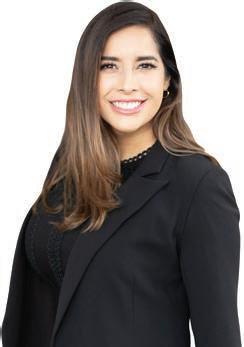
Humor: Good Times Free Comedy Show
Live comedy with Drea Meyers, recently featured in the San Francisco Chronicle and The Metro will host. 7 to 9 p.m. Free. Speakeasy Ales & Lagers, 1195 Evans Avenue. For more information and to register: https://bit. ly/3zo3OTS
8/4 Thursday and 8/11 Thursday
Fitness: Rooftop Bootcamp at the Park A relentless, time-efficient, actionpacked workout, with heart-thumping drills and total body challenges. Provided by FITNESS SF. 8 to 9 a.m. Free. Salesforce Park, 425 Mission Street. For more information: https:// bit.ly/2NgdpkP
Performance: Red Culebra: Let Us
Speak Frog
Explore imagined ecologies in Let Us Speak Frog, an experimental music and multi-media performance. Responding to the Holocene extinction, an ongoing event caused by humans, Red Culebra uses generative composition to speak non-human languages and transform into flying snakes. Inspired by Indigenous mythologies and storytelling traditions, enter alternative realms of space and time, visit frogs throughout the world and attempt to apologize for human destruction.Featuring live dance and immersive animation. 7 p.m. Tickets $12 to $15. McEvoy Foundation for the Arts, 1150 25th Street, Building B. For more information and to purchase tickets: https://bit.ly/3aX713d
Online 8/9 Tuesday – 8/16 Tuesday


Art: Artist Trading Cards Online Workshop


Artist Trading Cards (ATCs) are twodimensional works of art about the size of a playing card. Originating as part of a conceptual art show in the late-1990s, they’re historically connected to mail and miniature art. Meant to be traded but never sold, they provide an opportunity for artists to share their work in a non-commercial form. The workshop will rely on easily
obtained materials, starting with an introduction to basic approaches to collage, using examples and demonstrations plus tips and tricks. There’ll be time to work, with options to socialize. Sharing will be encouraged as well as exchanging cards through the mail. Workshop fee includes a small materials kit to be mailed to students by the instructor. This class meets two Tuesdays, from 4 to 6 p.m. $75. Presented by the San Francisco Center for the Book. For more information and to register: https://bit.ly/3zkyO6T
Online and In-person
8/12 Friday – 9/16 Friday
Continuing Education: “The Richness of Rossini”


The composer of the sparkling operatic comedy The Barber of Seville, Gioaccino Rossini, created his own musical style. Explore the early, lesser-knowncomedies of this teenage prodigy; beloved Italian comic works like The Italian Girl in Algiers and Cinderella, and imposing serious operas like Tancredi and Semiramide culminating with theFrench grand opera William Tell. Six Fridays, 10 a.m. to noon, offered in-person and online simultaneously. $115. Membership ($50 annually) required. Presented by Osher Lifelong Learning Institute at San Francisco State University. For more information: https://bit.ly/3OiomRT
Community: Bernal Heights Garage Sale
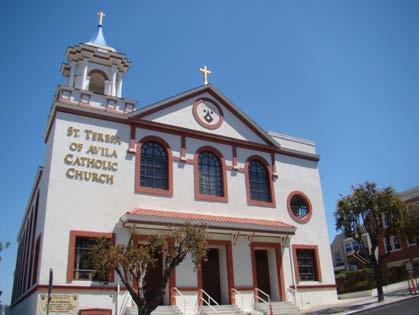
A Bernal Heights tradition and arguably San Francisco’s largest single day garage sale. 9 a.m. to 2 p.m. For more information: https://bit.ly/2W8JFzI
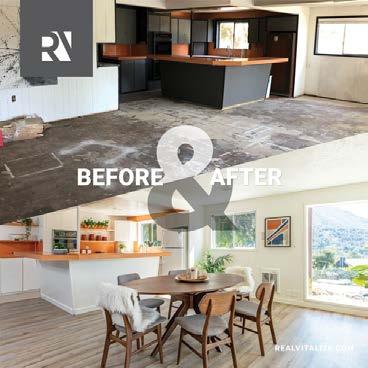
Shopping: Outdoor “Mini Mart”
Mission Bowling Club brings back Mini Mart, the quarterly shopping event
featuring locally made jewelry, home goods, apparel, art, and more. 12 to 4 p.m. Free to attend. Mission Bowling Club, 3176 17th Street. For more information: https://bit.ly/3ziE6Qv
8/13
Saturday – 8/14 Sunday
Festival: Pistahan
Celebrating Filipino and FilipinoAmerican arts and culture, the annualPistahan features contemporary and traditional music, dance, art, crafts, cuisine and artifacts. 11 a.m. to 4 p.m. Free. Yerba Buena Gardens Esplanade, Mission Street between Third and Fourth streets. For more information: https://bit.ly/3v4FDqH

Online Career: San Francisco Virtual Career


Fair
Participate in one-on-one chat, instant and scheduled video interviews with local and national employers. 11:30 a.m. to 2 p.m. Free. For more information and to register (required): https://bit. ly/3PCWmJu
Film: Spiderman: No Way Home B.Y.O. Blanket for the Bay Area’s biggest big screen experience. Take in a family favorite outdoors, and explore the interactive kids zone featuring games, crafts and body art stations. Designed for all ages, each evening offers special guest giveaways, cinemainspired snacks and beverages, and much more. 3 p.m. Free but reservation recommended. Thrive City, 1 Warriors Way. For more information: https://bit. ly/3Q0dGIX
Festival: Aloha Poly Fest
10th annual summertime event celebrating Polynesia (Hawaii, Samoa, Tonga, Tahiti, Cook Islands and New Zealand), Melanesia (Fiji), and Micronesia (Guam) islands in the South Pacific through cultural dances, songs, crafts, games, merchandise, and food. 10 a.m. to 6 p.m. Free admission, free parking. Cow Palace Arena, 2600 Geneva Avenue. For more information: http://www.alohapolyfest.com/
6 THE POTRERO VIEW August 2022 COMMUNITY | AUGUST
Pistahan Festival at Yerba Buena Gardens.
2 tues 3 wed 6 sat 13 sat 18 thur 20 sat 27 sat Come be part of a Welcoming, Warm, Inclusive Faith Community CATHOLIC CHURCH Served by the Carmelites 1490 19th Street (at Connecticut Street) SUNDAY MASSES WEEKDAY MASSES 390 Missouri St San Francisco, CA 94107 415.285.5272 St Teresa of Avila’s Church is an EPA ENERGY STAR® certified building. We continue to livestream some weekend Masses. Link is on our website: MASKS STRONGLY RECOMMENDED MarylouLopez (415)-965-9293 marylou@maryloulopez.com maryloulopez.com SCANHERE TOLEARNMORE Contactmeandlearnmore aboutRealVitalize! THINKINGOFSELLING? SELLYOURHOMEFASTER, FORABETTERPRICE TheRealVitalizeprogramletsyoumake theneededimprovementsandrepairs toprepyourhomeforsale. Wepaytheup-frontcostsandyou don'tpayusbackuntilclosing,withno hiddenfees,charges,or markups MosthomesusingtheRealVitalize programsellatorabovelistprice*. Painting RoomRevovations FlooringandCarpentry CleaningandHandymanServices MovingandStorage ElectricalandPlumbing LandscapingandCurbAppeal Andmuchmore! UsetheRealVitalizeprogramtohelpwith:
PHOTO: Jim Watkins Photography
Long Bridge Superhighway of Yesteryear
was in the Bay.
“The Long Bridge allowed people to commute much more quickly – by a new form of mass transit, the railroad, rather than by boat or foot – and made living in Hunters Point very practical,” Day said.
On weekends, the Long Bridge served as a recreation spot, a place to stroll, fish, or launch boats into the Bay.
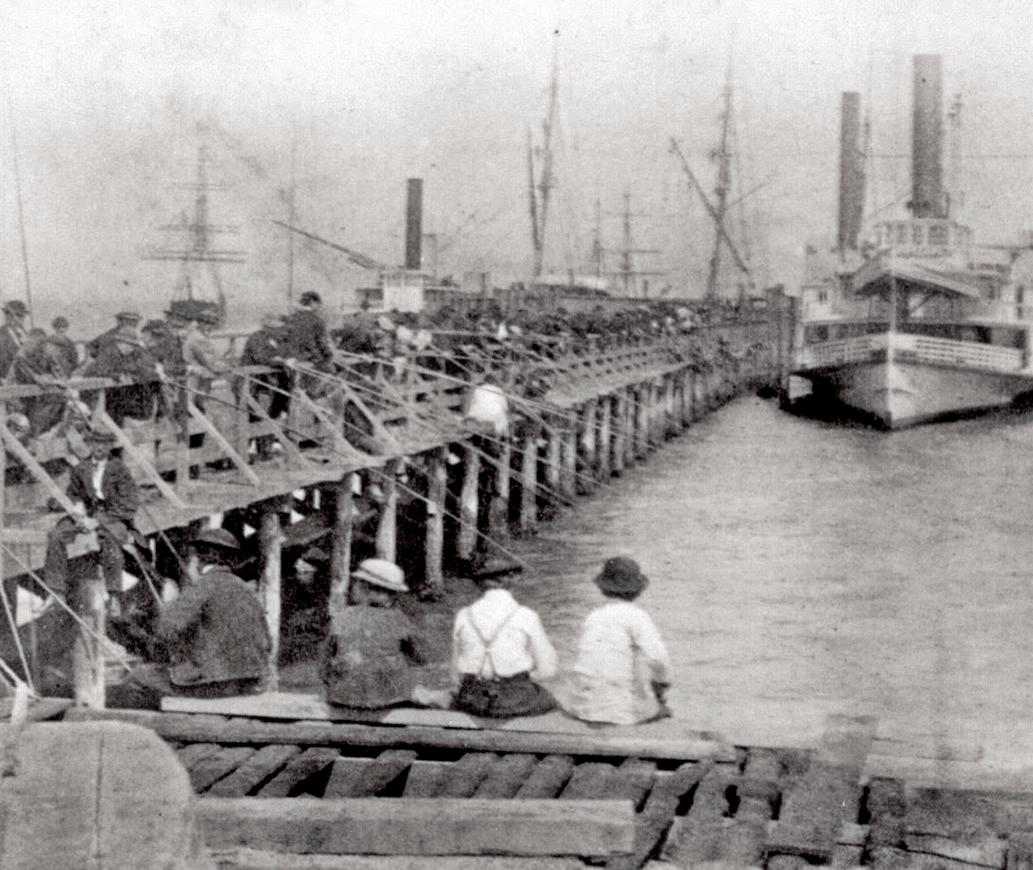
Another innovation related to building materials.
“The City Hotel, San Francisco’s first inn, was made of adobe because that was the material the first settlers knew best,” Day noted. “Problem is, as they quickly discovered, adobe was not very sturdy, and unsuited to earthquake country.”







They tried wood frame structures.

But those were threatened by the everpresent danger of fires. San Francisco suffered six big blazes beginning in the 1850s. Eventually steel-reinforced masonry was adopted, at least for tall buildings in the Bay Area.

“It became possible to use locally manufactured iron after 1856 with the opening of the Pacific Rolling Mills plant. So, the City eventually settled on the best of all possible worlds, at least for tall buildings in this area: masonry reinforced, first with iron and then, after July 1868, with steel made at Pacific Rolling Mills,” Day explained. “The plant was located in China Basin and used coal from the newly opened Tesla Coal Company, which was located near Livermore.”
BY JOE CASTROVINCI
San Francisco has long found creative ways to solve complex ways, including, in the 19th Century, development of the Long Bridge.
“A lot of locals have never heard of it, but it was an architectural wonder that solved a huge problem the City faced in the 1850s and 1860s,” said Linda Day, an Osher Lifelong Learning Institute teacher.
In those years life was oriented to the Bay. Most transport was by boat; supplies arrived, and finished products

left over the water. People wanted to live near the Bay—South-of-Market, Dogpatch, and Potrero Hill—because that offered a short commute in a time when the typical workday might mean twelve hours of hard labor.
Buildable land was in short supply. As the City spilled south beyond Rincon Hill, into Islais Creek and Hunters Point, travel times expanded. The Long Bridge served as an 1850s-style “superhighway” that started in SoMa and headed south over the water for miles, using a route that follows Fourth and Third streets but which at the time
7 August 2022 THE POTRERO VIEW
Fishing from Long Bridge in 1869.
PHOTO: by Eadweard Muybridge, courtesy California State Library
StartingAugust1st,nomorefunny hours!We'llbeopen7daysa week from7am-6pm! Tocelebrate,comebybetween4-6pm anydayandwe'llgiveyoua 20% discountoffyourorderduringthe monthofAugust! SEVENDAYS AWEEK! EVERYDAY7:00AM-6:00PM MONTUESWEDTHUR FRISATSUN
to preserve the sidewalk in front of their house despite not owning it, but claims the suit addresses a completely different situation.
“This is not a problem that starts at the surface, it’s underneath the surface,” Rottinghaus said. “You can’t go out there and core into this asphalt and see what’s going on with the soil below, because you don’t own it.”
The legal action raises the larger question of whether it makes sense to build on bay fill in the first place.
“It’s not really a great place to build for multiple reasons, not just because of subsidence but because of climate change and sea level rise,” said Joel Pomerantz, San Francisco cartographer and natural history educator. “And it’s economically dubious for the long term.”
It’s also not ecologically sound.
“We know now that the areas that were filled in were extremely important to the entire Pacific basin,” said Pomerantz. “Areas that were considered wasted space were doing a really important ecological service for humanity and all other species.”
The 303 acres of Mission Bay were developed to include more than 6,000 housing units, in excess of four million square feet of commercial space, the University of California, San Francisco’s research campus and medical center, and community-serving spaces like fire and police stations, a public school, and parks. In addition, more than $700 million in public infrastructure was installed, including streets, sidewalks, and storm drains.
As Pomerantz pointed out, the ones who “get stuck holding the bag” for paying to repair this infrastructure didn’t create the problem in the first place.
Developers and the City are making money filling in the bay from increased revenue and taxes without facing the consequences.
According to Gray Brechin, historical geographer and author of Imperial City, developers realized the consequences of constructing on filled ground in 1868 after the Hayward earthquake created tremendous damage.
“They began to learn that building on fill areas is pretty stupid,” Brechin said. “But that didn’t stop them from continuing to do so because there was money to be made.”
Rather than not constructing in the area, Rottinghaus thinks it should be properly maintained by the City, with associated costs not pushed off onto the residents.
“Maybe what’s necessary in this area is a funding mechanism to constantly do upgrades so that people don’t trip and fall,” he said. “You can’t lay that off onto the people. You can’t say we’re going to have you maintain the infrastructure of your city.
Nationally, gas and oil infrastructure are associated with a blaze every four days and a fatality every 26. In 2010 a gas explosion and ensuing fire in San Bruno caused eight deaths and ruined nearly 40 homes. In 2019 a leaking gas line triggered a blast that damaged several buildings in San Francisco’s Richmond district.
Fire risks associated with gas infrastructure are amplified by significant earthquake hazards, with the Bay flanked by the Hayward and San Andreas faults to the east and west, respectively.
In mostly rural areas the electric grid has triggered catastrophic fires. In 2018 the Camp Fire, sparked by electrical transmission lines, became the deadliest and most destructive wildfire in state history. In the ensuing years PG&E and other state utilities have aggressively used power shutoffs to suppress fire risks during high-heat and drought conditions.
Gas stoves are relished by home chefs; gas appliances are ubiquitous in commercial kitchens.
Stewart Chen, owner of Umi, a Potrero Hill Japanese restaurant which relies on a gas grill, fryer and stove, said he had practical issues with switching to electricity.
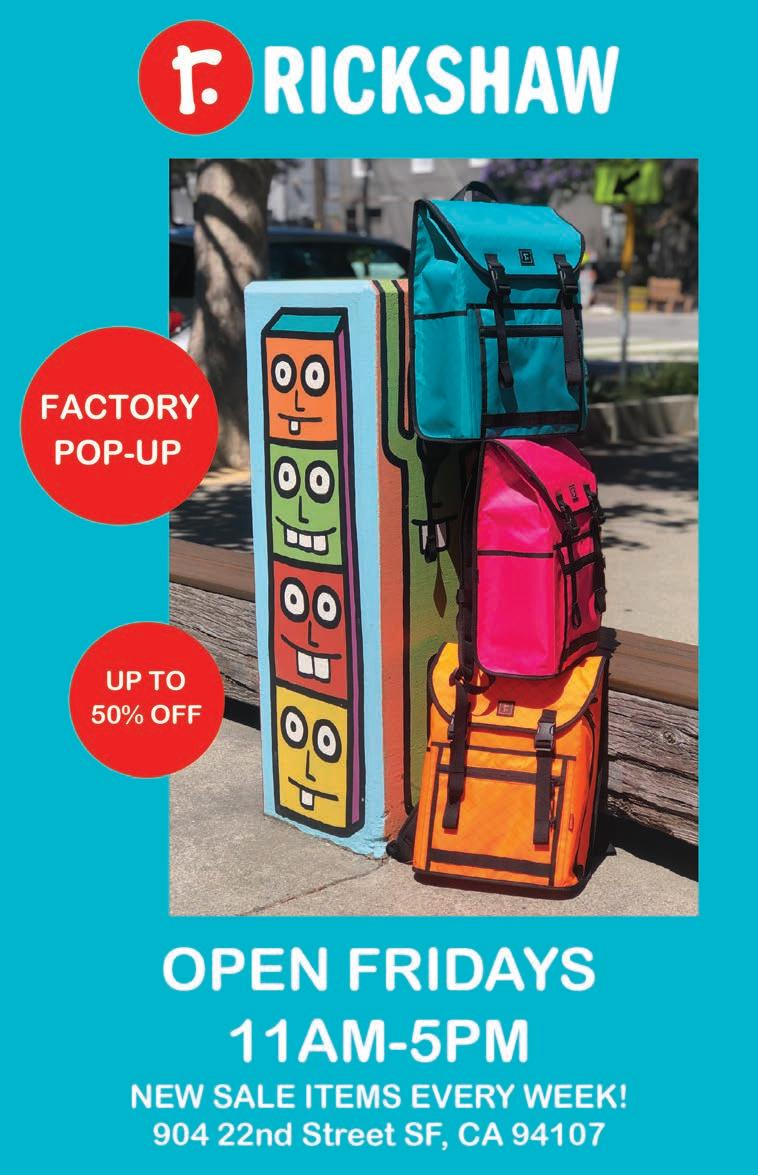
“I understand in residential kitchens but not for restaurants because of the need for cooking volume and speed,” he said.
Chen wondered whether the electric grid would be able to reliably accommodate increased demand. His reliability concerns were validated by a University of California, Berkeley Haas Institute study, which concluded that in Northern California, particularly the Bay Area, growing demand associated with electric vehicles and building electrification could exceed the current rate at which Pacific Gas and Electric Company is upgrading its system.
2025, just three years from now.
The San Francisco Public Utilities Commission is leading municipal electrification efforts, offering low-income customers rebates on solar panel installation under GoSolarSF, reduced fees to switch from Pacific Gas and Electric Company (PG&E) service to Hetch Hetchy Power’s hydroelectric supply through CleanSwitch, and up to a $1,000 rebate to replace gas water heaters with electric heat pumps.
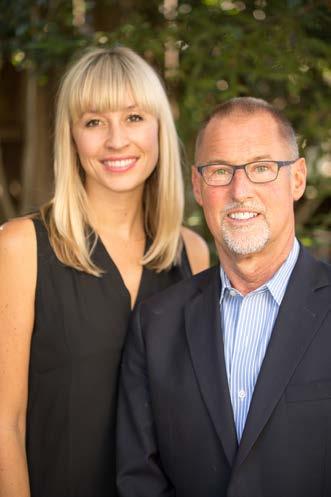
The Board of Supervisors cited urban fire risk as a primary factor behind the new construction natural gas ban.
Health risks are associated with gas combustibles. Studies indicate that gas byproducts, such as carbon monoxide and nitrogen dioxide (NO2) can exceed state and national standards in household kitchens. NO2 levels exceeded air quality thresholds in 90 percent of modeled scenarios when stoves and ovens were used for more than an hour. Pollutant concentrations are especially prominent in apartments. A meta-analysis of more than 41 studies on the subject concluded that children living in a home with gas cooking face a 32 percent higher risk of developing asthma, a leading cause of emergency department visits for kids
Still, gas-fired electricity generation and gas appliances remain popular. Gas use in residential buildings in California rose 15 percent since 2014
David Jablons, owner of Dogpatchbased Daily Driver bagel bakery, said that his kitchen uses gas-powered and wood burning ovens, acknowledging that electrification would be a challenge. Simjon Gompers, a Goat Hill Pizza employee, expressed similar sentiments, stating that it’d be difficult to switch the high heat pizza ovens from gas to electric. All restaurateurs interviewed by the View worried that investments into all-electric equipment would be expensive and could increase operating costs.
Sheehan countered that fossil fuels, including gas, are more susceptible to price pressures prompted by supply constraints, arguing that “some of the price fluctuations will go away with renewable energy since you do not have that commodity-based finite supply.”
8 THE POTRERO VIEW August 2022
SUBSIDENCE
front page
GAS from front page
from
continues on next page
GAS
©2022 Corcoran Global Living. All rights reserved. Corcoran® and the Corcoran Logo are registered service marks owned by Corcoran Group LLC. Corcoran Global Living fully supports the principles of the Fair Housing Act and the Equal Opportunity Act. Each franchise is independently owned and operated. Data from SFAR MLS, homes sold between 6/13/22–7/21/22 excluding BMR sales. Information deemed reliable, but not guarenteed. REALTOR ® LIC# 013122854 WesFreas@CorcoranGL.com +1 415.518.6538 REALTOR ® LIC# 01854549 WendyWatkins@CorcoranGL.com +1 415.367.5997 WesandWendyHomes.com WENDY WATKINS WES FREAS What could your home be worth? Reach out to learn more about today’s market. From first time home buyers to savvy sellers, we're looking forward to surpassing your highest expectations. Latest Sales Activity on the Hill Address 230 Texas St 888 7th St #LL04 1300 22nd St #116 888 7th St #213 815 Carolina St 451 Kansas St #522 76 Littlefield Ter 1391 De Haro St 348 Arkansas St 636 Connecticut St 451 Kansas St #559 1560 22nd St Type Single Family Condo Condo Condo Single Family Condo Single Family Single Family Condo Condo Condo Condo Bed / Bath 3 / 2 0 / 1 1 / 1 1 / 1 2 / 1 1 / 1 2 / 2 2 / 1 3 / 3 2 / 1.5 1 / 1 3 / 2.5 Sale Price $1,437,000 $560,000 $820,000 $590,000 $1,580,000 $839,000 $1,230,000 $1,300,000 $1,500,000 $1,080,000 $849,000 $2,060,000
The California Restaurant Association (CRA), a nonprofit association of restaurant owners and chefs, is suing the City of Berkeley over a gas ban passed in 2019. CRA argues that local governments are preempted from all-electric ordinances by the Federal Energy and Conservation Act (ECPA) and California State Law. The Court ruled in favor of Berkeley, dismissing CRA’s federal preemption claim. CRA has appealed.
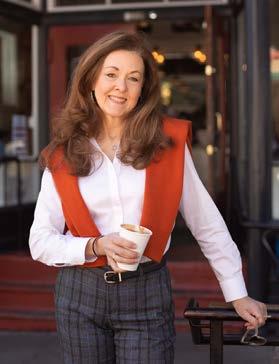
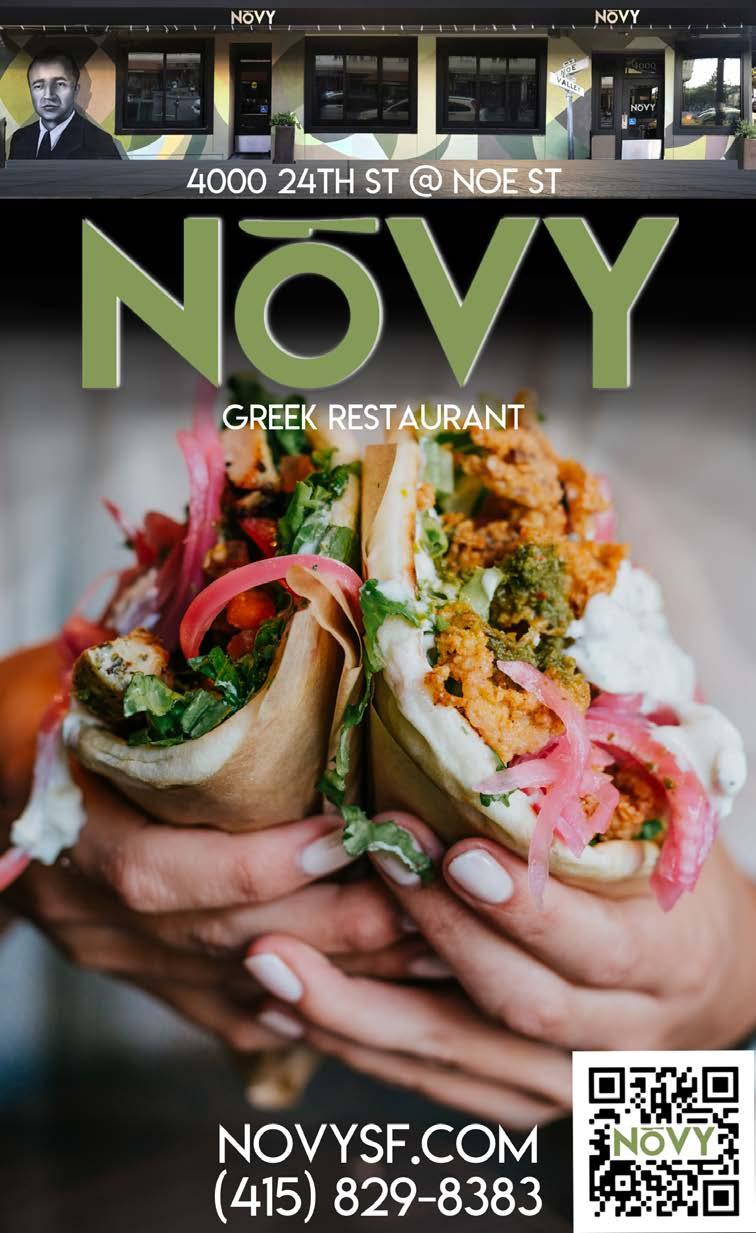
Sheehan concedes that change is difficult, which “…is why we are committed to a stakeholder process to make the transition as easy as possible, and to get buy-in from all sectors.” He said electrification is broadly supported at state and federal levels. The California Public Utilities Commission has authorized $200 million to incentivize electric space and water heaters. Governor Gavin Newsom included $300 million for building electrification upgrades over the next two years in his latest budget proposal. The Federal Infrastructure and Jobs Act allocates $65 billion for grid reliability, resiliency, and clean energy technologies.
get approximately 100 signatures of residents,” said Ben Sumers, a Long Bridge Street resident. “I went out to the Mission Bay Children’s Park on summer mornings and walked up to parents. Most said, ‘We absolutely need a school here.’”
“It’s been a long journey since 1998, when the former Redevelopment Agency, now the Office of Community Investment and Infrastructure, set aside the parcel for the school,” said Bruce Agid, a South Beach|Rincon|Mission Bay Neighborhood Association board member and Mission Bay Elementary School Community Steering Committee member. “At the June meeting, more than 15 residents from the greater East Cut, Mission Bay, and Potrero and Dogpatch areas spoke in support of the school. No one opposed it. Over 125 parents sent emails to SFUSD. Over 750 people signed a petition in support of the school before the meeting.”
“Newer developments within the southeastern neighborhoods become a revolving door without basic public amenities in place, such as a school. That forces out families with young children,” said Emily Wang, Dogpatch Neighborhood Association Member-At-Large.
tain topics, like biotech and medicine. We said how we’d like to apply those experiences to our high school classes. We also explained it’s important to ensure access to services like public transportation. Otherwise, students will have trouble getting to the Hub,” said Holder-Soto. “When you meet people like you in the research labs and doctor’s offices, you can see opportunities are right there. You can get the education and training where you live to become a doctor or a scientist.”
Don Woodson, director of UCSF’s Center for Science, Education, and Outreach, said the Hub expects to begin recruiting high school students for internships at UCSF by the end of January 2023.
“We will site the Linked Learning
Hub on UCSF’s Mission Bay campus at a location still to be determined. The Hub will exist before and until the Mission Bay Elementary School is built. This way high school students don’t have to wait for construction to be finished,” said Woodson. “Our goal is to offer opportunities in a wide variety of fields, including neuroscience, oncology, cardiac research, and chemical biology. Students will do work in labs and engage in discussions. Their progress will align with their academic year and personal interests.”
According to San Francisco Board of Education president Jenny Lam, the Mission Bay Elementary School and Linked Learning Hub offer the potential for SFUSD to design a “21st century school.”
Green Benefit District | GreenBenefit.org
Fund president. “With early childhood education programs, public transit, access to nature, parks, and playgrounds, our neighborhoods are ideal for family life. I’ve seen the neighborhood grow for the past 10 years and this growth warrants the new school.”
“I am proud to have been one of the volunteers who helped advocates

Since 2021, high school students have engaged in Linked Learning Hub development. William Holder-Soto, 17, a rising senior at Mission High School, was a student ambassador fellow in the spring 2022. He and 11 other high school students provided feedback to UCSF on the Hub.
“A new group will join the program in fall 2022, along with me and another returning student. We gave UCSF ideas about what we’d want to learn about cer-
Green Benefit District Fall Music Series – Free! The GBD and partner organizations are sponsoring four free music events in Woods Yard Park (22nd St between Minnesota and Indiana) on Saturdays, September 3 and 17, and October 1, and on Sunday October 16. There will be family activities and tie-ins to other local events. Watch the GBD website for details as they are available.
Starr King Open Space | www.starrkingopenspace.org
Come join our monthly meetings which are open to the public, the third Monday of the month at 7 p.m. This month it is August 15th at the Connecticut Yankee. Check the website for info.

Please join our monthly volunteer days on the second Saturday of the month from 9:30 a.m. to 12:30 p.m. This month it is August 13th.
If you can, please donate to help keep Starr King Open Space open, accessible, and well maintained for our neighbors.
For


This summer has given us a window of opportunity — a slightly more even playing field among buyers and sellers. Homeowners from 2010 can now reap rewards of 12 years of steady growth, and buyers are seeing more opportunity on the market.
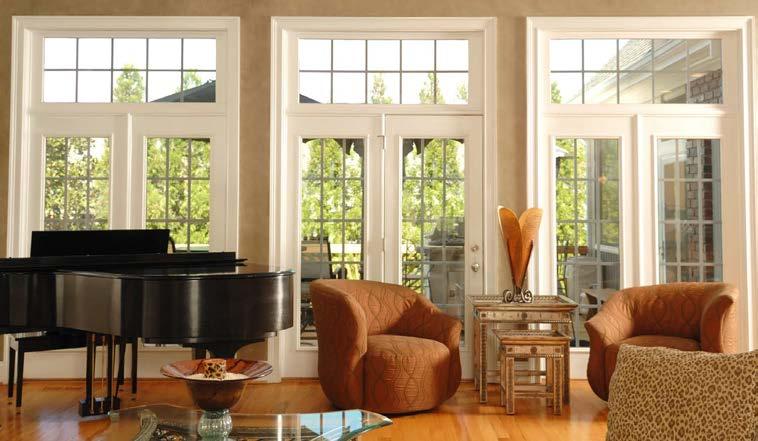
This is a great time for investment, to grab a home on the Hill that may be out of reach later. As interest rates rise again this Fall, let’s talk about how to move you forward right now.
Call me for a no-obligation talk. I’m here to help.
9 August 2022 THE POTRERO VIEW
GAS from previous page
MISSION BAY SCHOOL from page 3
fee your organization can be listed
Getting
Contact production@potreroview.net
a $200 annual
in
Involved.
Melinda Lee Your Agent for Good. e-Pro, SRES | Lic. #01344377 melinda@melindalee.realtor 415.336.0754 | melindalee.realtor 4040 24th Street, San Francisco, CA 94114 ©2022 Corcoran Global Living. All rights reserved. Corcoran® and the Corcoran Logo are registered service marks owned by Corcoran Group LLC. Corcoran Global Living fully supports the principles of the Fair Housing Act and the Equal Opportunity Act. Each franchise is independently owned and operated.
It’s time to BUY!
for the Works Progress Administration, part of President Franklin D. Roosevelt’s Depression-era New Deal relief program. He painted the high school’s entryway with a mural that depicted the first president alongside Indigenous people and enslaved African Americans. By the time it was completed in 1934, Arnautoff had become a celebrated figures in San Francisco’s cultural scene, building upon his experience as an assistant to the legendary Mexican muralist Diego Rivera.
Sharing is Caring
After almost nine years in Laurel Village, Artesano relocated to Third and 20th streets, a move prompted by pandemic-induced rising costs and lower sales revenues. The restaurant splits space with organic health food cafe The Plant, with a common storefront, dining room, kitchen, and even some employees. “Sharing fixed and utility costs, and staff and space can help both us and The Plant not only survive but even thrive in a challenging economic situation and in an expensive market like San Francisco,” said Artesano’s Owner Doug Mathieux. “We see this as a potentially exciting new trend in the local restaurant industry whereby restaurants can look to each other and join forces to get creative and adapt together. We also know San Franciscans are intelligent and open-minded to understand this new hybrid concept and test it out for themselves.” Artesano continues to feature house-made empanadas, crispy plantain chips, lomo saltado, among other tasty items.
Federation
The Board of Directors of the Jewish Community Federation and Endowment Fund unanimously appointed Mission Bay resident Joy Sisisky as chief executive officer. Sisisky had served as the Federation’s Interim CEO and Chief Philanthropy Officer, stewarding over a billion dollars in Jewish community philanthropic capital. “This leadership transition at the Federation is an exciting opportunity for strategic transformation, and Joy is absolutely the right CEO to lead the organization forward,” said Arthur Slepian, Board Chair. “As our new CEO, we are confident that Joy will build on the strengths of the Federation; guiding the organization pursuant to its values and cultivating a broad, secure and inclusive Jewish community that provides compelling engagement and philanthropic opportunities across the Bay Area. Working with the board, staff, community leaders, donors and other federation partners and funders, we are excited for Joy to lead the organization forward into its next chapter, one of bold and pioneering change.”
Print
Readers may have noticed that the paper they hold in their hands looks different. That’s because it is. For almost 15 years the View was printed at the San Francisco Examiner’s facility in Bayview. For the last year or so print quality degraded, to the point in which advertisers demanded refunds for poorly executed insertions. The View’s complaints were met first with indifference, then hostility, followed by being fired as a client. The paper is now printed by Folger Graphics, in the East Bay. Can’t buy local even if you want to…
POTRERO VIEW LOCAL BUSINESSES DIRECTORY

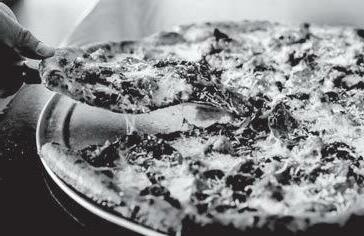

Piano Lessons, Vocal Coaching
27 years experience teaching music in Sonoma county public elementary schools, private piano lessons, vocal coaching and performance preparation. scoladimusica@gmail.com
Babysitting/Coaching
Division 3 athlete, wilderness first aid responder certified, college senior available for babysitting, soccer/ lacrosse coaching. $20/hour. Sara, 415.872.2254; smoss@pugetsound.edu

Give up the Ghost
If you’re in the mood for a solid B movie – okay, maybe D+, but that’s a passing grade – complete with an overexplained, preposterous, backstory, “dramatic” acting that’s unintentionally funny, and fight scenes which, if real, would leave the ever-bounce-back combatants comatose, dead, or akin to roadkill on Highway 101, Green Ghost and the Masters of the Stone is for you. The tale is “written” – or more aptly hammered together with old wood and screws left behind by Raiders of the Lost Ark, Dwyane Johnson narrating a sound and light show at a Mayan ruin, and The Karate Kid – by Charlie Clark, who cast himself as a car salesman who moonlights as “Green Ghost,” a masked Lucha libre wrestler. There’s lots of kicking and punching, laser eyes and fingers that explode things, set amidst an epic struggle for the fate of humankind, or maybe just to get more than Clark’s friends and family to watch this thing. Really, though, if you want an enjoyable utterly complete waste of time, Green Ghost is here for you.
PUBLISHER’S VIEW from page 2

Eel is a topic of heated debate between fisher people, conservationists, farmers, and water purveyors. Native tribes, themselves mauled by more recently arrived peoples, have their own perspectives, but they too have been drained of their lifeblood, weakening their ability to robustly engage.
415.643.9578 | production @ potreroview.net | potreroview.net/advertise/
CLASSIFIED ADS

Muir Beach Studio and House
Walking distance to the beach, with the crashing waves visible and audible.
Studio: Cozy studio comfortable for two-people. Includes kitchenette and private patio. $200/night plus cleaning fee, two-night minimum. Editor@ potreroview.net or 415.643.9578.
House: Three bedrooms, two full baths, with two decks. $400/night, two-night minimum. Editor@potreroview.net or 415.643.9578.
Legal Notices
The View accepts legal notices. Please contact: production@potreroview.net; 415.643.9578.
Freelance Writers Wanted
Modest pay, interesting assignments. Contact: editor@potreroview.net
How to best manage lands before and after fires is another pressing, practical, stewardship question. Roughly 5,000 acres of Lone Pine Ranch were scared by the 2020 August Complex wildfire. The Conservancy hasn’t yet settled on how to best address the consequences of the conflagration, but it seems likely that dead and dying trees adjacent to main roads will be culled, a dangerous task for professional sawyers since the wood is severely compromised, with two years of decay and beetle damage. Likewise, the Ranch has long hosted cattle grazing, an activity that will continue, in part for economic reasons. Raising livestock on a “nature preserve” is controversial; cows aren’t “wild” and they emit methane, contributing to climate change.
Less constrained by federal and state bureaucracy, nonprofit preserves offer an opportunity to experiment with stewardship approaches. Save the Redwoods League recently transferred management of Andersonia West – renamed Tc’ih-Léh-Dûñ (tsihih-LEY-duhn), “Fish Run Place” in the Sinkyone language – to the Intertribal
Sinkyone Wilderness Council, a group of 10 native tribes whose ancestors were forcibly exiled by European American settlers. The Wildlands Conservancy has similarly indicated an interest in native involvement in land decisions.
Managing for a climate-changed future could consist of testing different plant and animal stewardship that anticipates a hotter, drier, or increasingly unpredictable planet. (Re-)incorporating humans into nature might entail cellphone- and plastic-free boundaries; creation of “hunting and gathering” gardens for campers and as part of educational visits to supplement, or replace, store-bought supplies; and comprehensive reuse and recycling. Leave no waste.
We’re at a kink in the ecosystem curve, with emerging new patterns of temperatures, rainfall, and animal migration. Potentially dangerous times, but also full of possibilities to help nurture emerging resilient ecosystems. There should be no reservations about making the most of our private reserves.
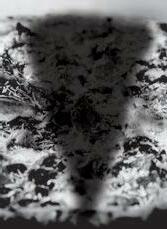
10 THE POTRERO VIEW August 2022
SHORT CUTS from page 2
Potrero View | “2 x 2” Neighborhood Ad Draft 1 2022-02-16 CABINETS • CUSTOM BUILT • Your Local Lender. Here To Help You Navigate Homeownership Julie Shumate NMLS#310202 | Loan Consultant 700 Airport Boulevard, Suite 280 Burlingame, California 94010 | Office: (650) 993-7581 | loanDepot.com, LLC NMLS ID 174457. Licensed by the Department of Business Oversight under the California Residential Mortgage Lending Act CRMLA 4131040. (082020 373960) (925) 413-6963 cell www.loanDepot.com/jshumate potreroview.net/advertise/ Directory Pricing* “2 x 2”“2 x 1” NEW! 3 months$210$110 6 months$365$175 12 months$585$375 * Prepaid in full. Not eligible for additional discounts. “2 by 2” 2.375 w x 2.375 h “2 by 1” 2.375 w x 1.1875 h LOCAL BUSINESS DIRECTORY IN THE VIEW Let your neighbors know what you have to offer! MAKE YOUR TAX-DEDUCTIBLE DONATION to Potrero View through SF Community Power; consider including your favorite newspaper in your trust. Correspondence to: 296 Liberty Street, San Francisco 94114 IN THE HEART OF DOGPATCH SINCE 2014 Dine-In To-Go Delivery Events longbridgepizza.com ORDER ONLINE PIZZA SANDWICHES SALADS CRAFT BEER
Sometimes an empty seat is a good thing
As a proud partner of the San Francisco Giants, we love a sellout crowd. But we also get excited about empty seats.
Like this one.
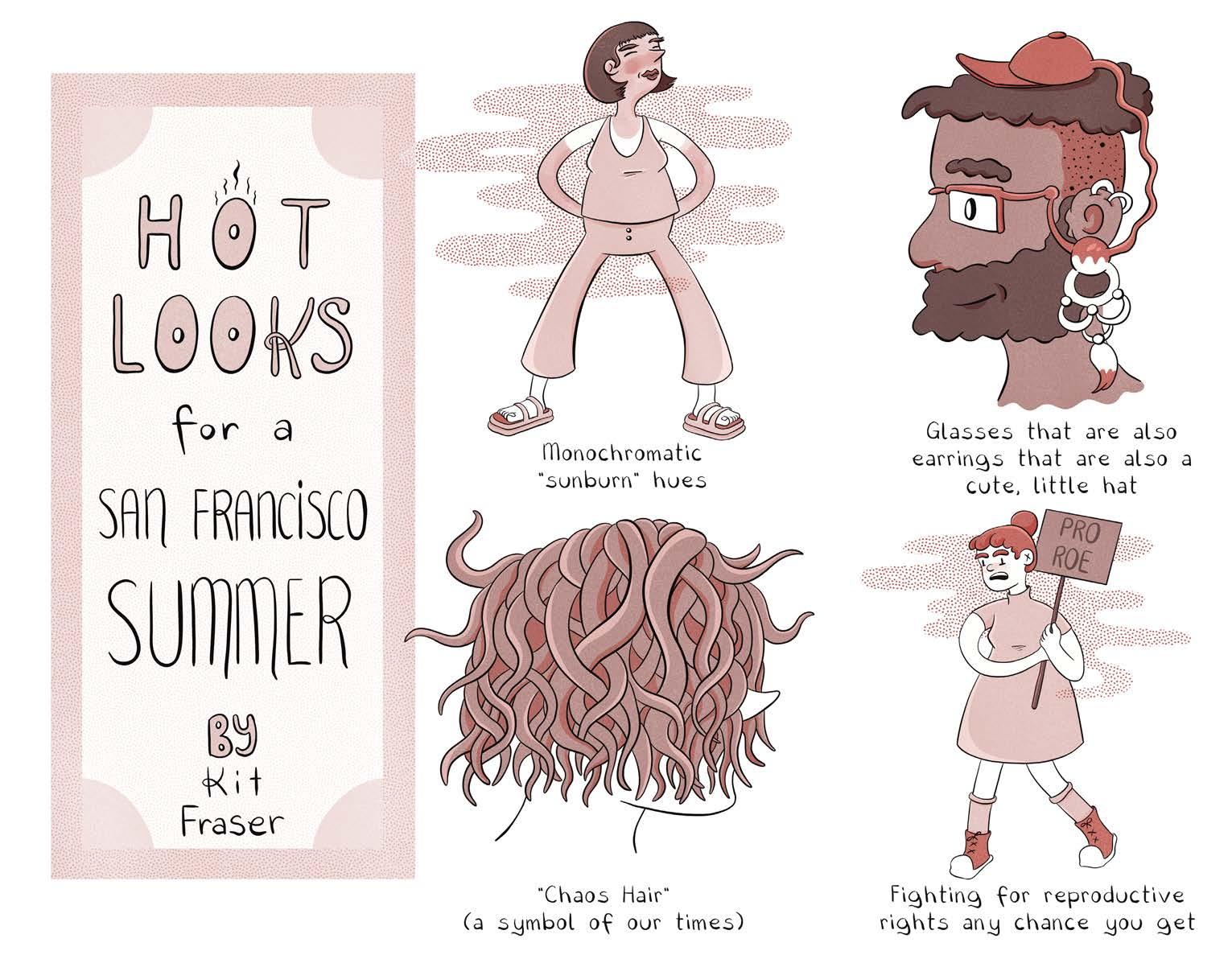
When you take a Cruise driverless ride, there's no one in the driver’s seat to get distracted, tired, or annoyed. It’s a safe, simple, fun way to get around.
Curious? We'll be at every Tuesday night Giants home game. Or simply sign up for a driverless ride today.


Proud



















11 August 2022 THE POTRERO VIEW
par t ner ofthe getcruise.com















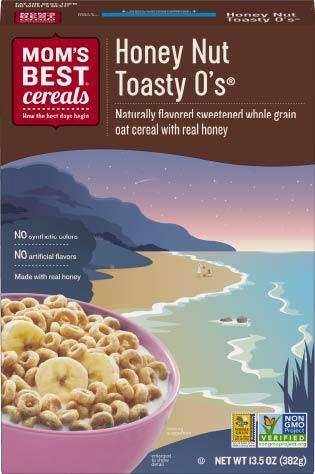

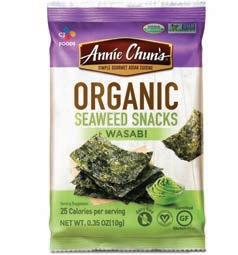




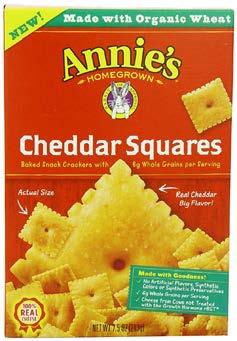
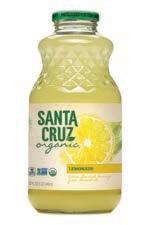

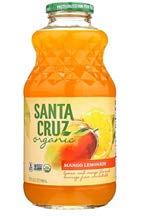











12 THE POTRERO VIEW August 2022 Sale Prices effective August 3-26, 2022 THANK YOU FOR SHOPPING AT THE GOOD LIFE Enjoy August and Sunshine And the Dog Days Of Summer! $2.99/lb Real Benzler Organic Grapes Straus Organic Yogurt 32 oz -reg 5.99 $5.49 Direct from the Field! Fresh Picked Corn! Non-GMO Organic or Conventional Yellow, White, or Bi-Color Local! Hippeas Chickpea Puffs oz $4.49 Fix & Fogg Nut Butters 13.2 oz $9.49-11.49 Annie’s Mac & Cheese oz -reg 3.29 2/$4 Califia Almond Milk 48 oz -reg 4.99 $4.49 Wonderful Good Life Sushi Annie Chung’s Organic Seaweed Snacks .16 oz -reg 1.29 99¢ Mom’s Best Cereals 20-22 oz -reg 6.29 $4.29 Annie’s Crackers 7.5 oz -reg 6.99 2/$7 Delicious Heirloom Tomatoes At The Good Life... So Good Pasta Prima Pasta & Sauces $4.99 Santa Cruz Lemonades 32 oz -reg 3.99 2/$6 Nana Mae’s Organic Apple Sauce 24 oz -reg 6.95 $5.95 Open Every Day! 8 AM to 8 PM - 1524 Twentieth Street - Potrero Hill - San Francisco - 415-282-9204





















 BY VIVIEN WANG
BY VIVIEN WANG












































































